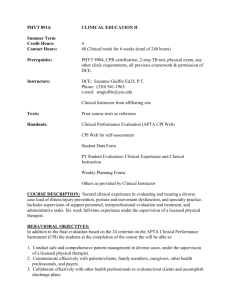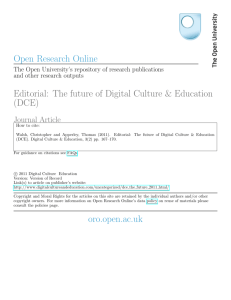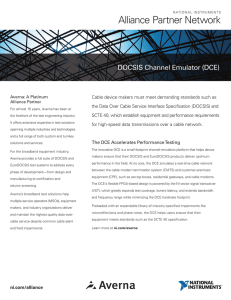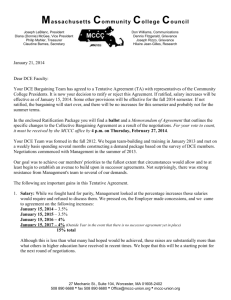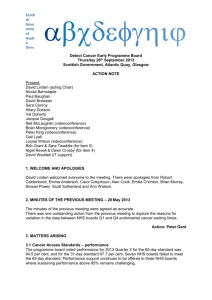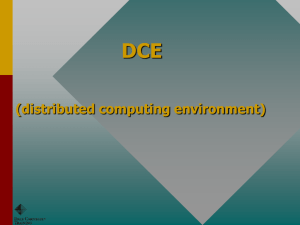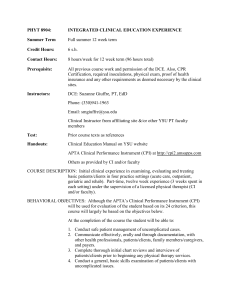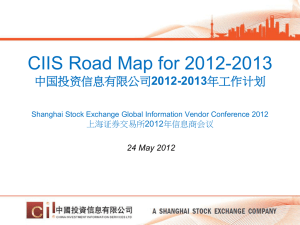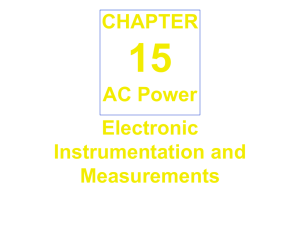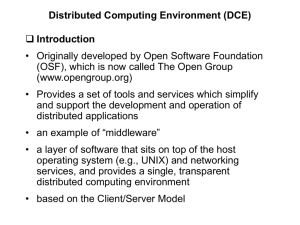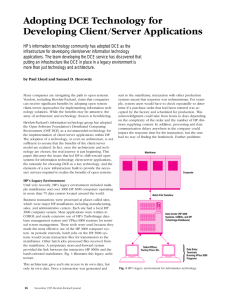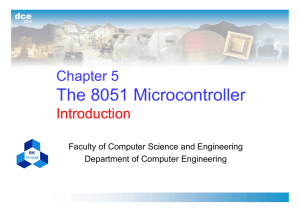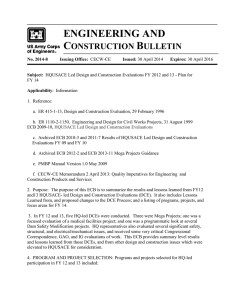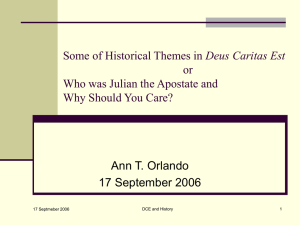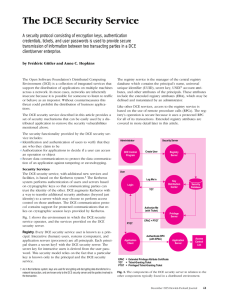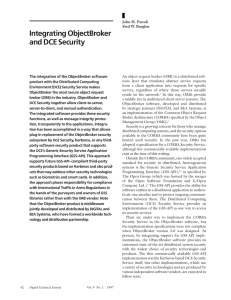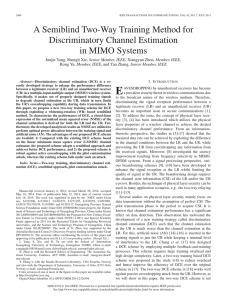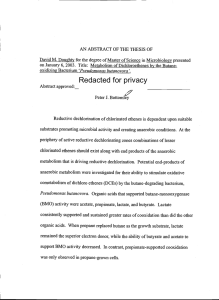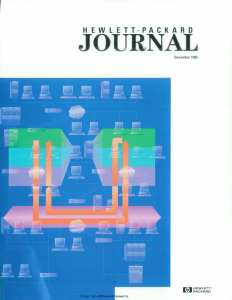please scroll down for article
advertisement
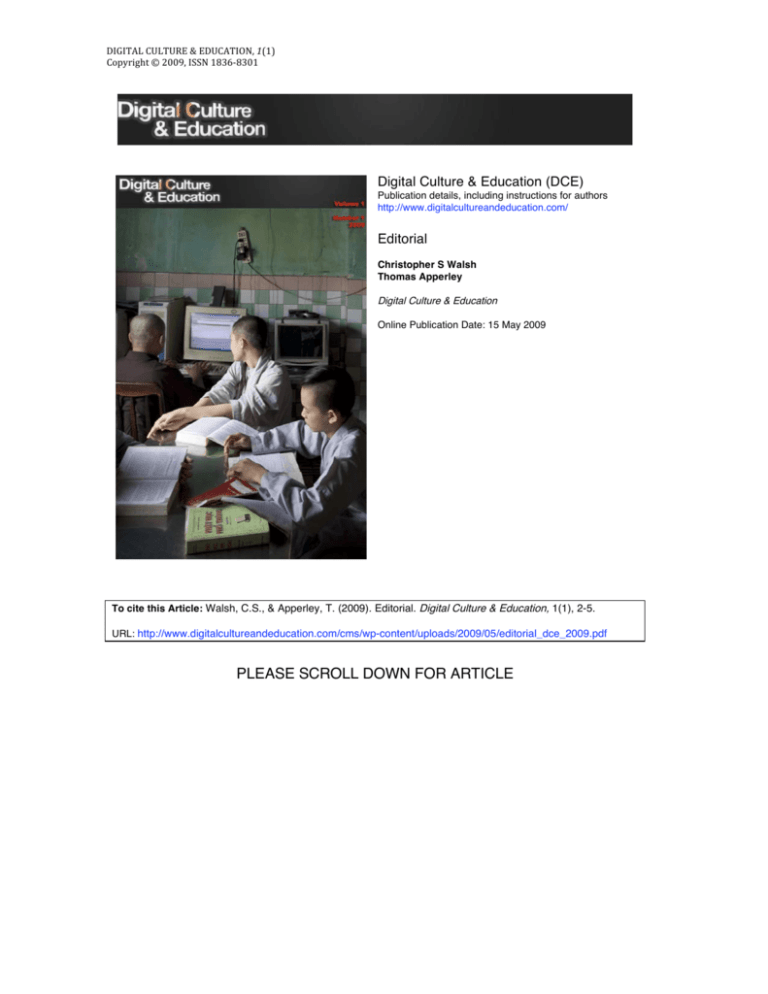
#" !" Digital Culture & Education (DCE) Publication details, including instructions for authors http://www.digitalcultureandeducation.com/ Editorial Christopher S Walsh Thomas Apperley Digital Culture & Education Online Publication Date: 15 May 2009 To cite this Article: Walsh, C.S., & Apperley, T. (2009). Editorial. Digital Culture & Education, 1(1), 2-5. URL: http://www.digitalcultureandeducation.com/cms/wp-content/uploads/2009/05/editorial_dce_2009.pdf PLEASE SCROLL DOWN FOR ARTICLE Editorial Christopher S Walsh Thomas Apperley Digital Culture & Education If we look carefully, post-Fordism takes advantage of abilities learned before and independently of entrance into the workplace: abilities brought forth by the uncertainty of metropolitan life, by uprootedness, by the perceptual shocks of technological mutations, even by videogames and the use of cellular phones. -Paolo Virno This quotation from a recent interview with Paulo Virno (Joseph, 2005), published in Grey Room, encapsulates the interdisciplinary position of Digital Culture & Education (DCE). This new journal is concerned with the changing demands of education and the especially central role of digital culture in preparing students for labor in the context of the ‘knowledge economy’. As Virno suggests, it is not simply new digital technologies, but also the mutable, transient, mobile lifestyles and cultures that they afford, which provide the skills, knowledges, and literacies necessary for a smooth segue into the contemporary workplace. DCE is a new international, peer-reviewed scholarly journal focusing on research in areas of digital culture which are relevant for education. However, we emphasise that this relevance may, and should be construed widely. The work we publish is both disciplinary and interdisciplinary, bridging the social sciences and humanities. Digital culture has transformed many fundamental parts of our working, public and personal lives in terms of how we communicate and consume, create knowledge and learn and even how we understand politics. The scale and speed at which digital culture has become imbricated in everyday life is unprecedented. Its impact on politics, aesthetics, identity, art, culture, society, and particularly education is thoroughly deictic. In response, we founded DCE to provide a forum for dialogue around the educational, economic, political, cultural, social, historic, legal or otherwise relevant aspects of living in a society increasingly dominated by digital communication and media. DCE is interested in work and scholarship theorizing identity, globalization, development, sustainability, wellbeing, subjectivities, networks, new media, gaming, multimodality, literacies, entrepreneurship and related issues. The journal provides an interactive scholarly context for the uptake of new technologies alongside the emergence of digital culture and its impact on teaching, learning and research across institutional and non-institutional contexts. We are committed to publishing print and digital work that takes a critical approach to the issues raised by the increasing importance of new technologies in all facets of society; in particular, research that examines the uneven uptake of technology, and perspectives on new media that emphasize its materiality, production, or environmental impact. Our interdisciplinary approach towards scholarship is supported by the diversity of the interests of the journal’s editorial board. DCE brings together scholars from education with scholars from emerging new media fields, including mobilities, game studies, internet studies and digital aesthetics.1 DCE is open-access. Accepted peer-reviewed articles will be 2 made available online shortly after submission. Realizing scholarly work entailing aspects of digital culture and education can become obsolete by the time an article goes to press in print-based journals, the journal’s website will be updated regularly each time an article is accepted for publication. Our commitment to making the journal ‘open-access’ emerges from our own frustration at trying, often unsuccessfully, to access articles from various university and publishing databases. DCE is also an interactive forum, where we anticipate individuals will contribute their own insights, perspectives and commentary on the published content with the expectation that this dialog will contribute to building a scholarly community of interest. DCE solicits work that explores new developments that enhance learning or provide new tools for interdisciplinary dialogue, work, development and collaboration. Considering the deictic nature of new technological innovations, we welcome new perspectives or theoretical frameworks for research as well as their disruptions and contradictions. Complex virtual teaching and learning environments are evolving where individuals may have multiple identities as teachers, learners, professionals, researchers, designers, workers and developers (Chappell et al., 2004). Individuals are increasingly connected to networks allowing them to receive, transform, and transmit information in a number of digital formats: social networking sites, virtual worlds, blogs, wikis, online games, and video and photo sharing sites. In these new and emerging contexts, digital culture connects diverse individuals allowing them to collaboratively design and produce works that potentially challenge and re-inscribe dominant discourses on the production and design of knowledge. We anticipate publishing articles that interrogate these multiple identities alongside the emergence of the semantic web and new virtual worlds where images have begun to dominate our modes of meaning-making and how we understand textuality (Bolter 2001; Kress 2003; Jewitt 2005). For us, the significance of digital culture for education is that education must now be conceptualized outside of institutional contexts. DCE recognises the impact on digital culture and education, as information becomes understandable by machines ‘talking’ to machines, where computers process knowledge itself—instead of text—using processes similar to human deductive reasoning and inference that challenge the conformity inherent across educational institutions. Further, schools, universities and academics are increasing their use of digital contexts to develop new modes of engaged learning, harnessing the collective zeitgeist of Twitter, Facebook, and Second Life to experiment with formats allowing them to provide educational opportunities to those inhibited by the demands of their work or location. Not only youth, but adults must continue their education as the importance and centrality of digital technology in work demands that they keep abreast of developments in order to remain competitive in their careers. This suggests a new understanding of education that emphasizes the importance of lifelong learning and unofficial ‘out of school’ everyday learning practices. Nearly a decade ago, Barnett (2000) described the difficult changes which face universities in an age of ‘supercomplexity’ as a result of globalisation, the information technology revolution and other forms of change. DCE also encourages work that explores how universities are no longer the vanguard of progress—where knowledge is concerned—due to the unprecedented access to information. The first issue of DCE explores the nexus of digital culture and education from several different perspectives. John Bishop’s work is clearly grounded in pedagogy and 3 professional development for teachers. Drawing on his experience working with preservice teachers on digital literacy projects using multimodal design, his article ‘Pre-service teacher discourses: Authoring selves through multimodal compositions’ argues for the inclusion of multimodal representation in literacy courses for pre-service teachers. Bishop’s article illustrates how, through their explorations of digital literacies, pre-service teachers have stabilized and/or improvised formations of identity, which have established opportunities for them to engage in praxis that merge their university experiences with their future public school responsibilities. With a similar pedagogical concern, Kerry Mallan’s article ‘Look at me! Look at me! Self representation and self exposure through online networks’ examines the use of online social networking software by youth. Drawing on empirical research conducted with students in public schools, she discusses how sites like MySpace are used by youth as a method of self-identification. Mallan frames her argument on the politics of the visible and the notion of spatiality, arguing that the importance of social networking software in youth culture demonstrates the centrality of community in the shaping of youth self-identity, while also suggesting new modes of technologically-mediated representation within youth culture, in respect to community, friends, communication, and recognition. The inaugural issue features several pieces that come from outside education. The articles suggest ways in which existing modes of engagement with digital culture within the Social Sciences and Humanities may be useful for developing complex and nuanced understandings of digital culture. Kyle Kontour’s article ‘Revisiting violent videogames research’ draws on research done in the field of Game Studies to critique existing “media effects” research that connects youth, digital games, violence, and aggression. Through a detailed reflection on the methodologies of “media effects” studies of digital gaming, Kontour illustrates that such research demands a more sophisticated understanding of digital games as objects, and gaming as an activity, in order to gauge the validity of their assessments. Clare Bradford’s detailed analysis of Canis Canem Edit (Rockstar Vancouver, 2006), examines the digital game in light of a long history of texts that have explored young people's experience of school. Bradford’s discussion is grounded in examples of gameplay, from which she argues that Canis Canem Edit suggests a peculiarly postmodernist textuality, that simultaneously deploys and interrogates references to historical and contemporary cultural practices.2 For Bradford, it is the manner in which the game suggests a postmodernist ethic that evades the binaries of liberal humanism which underpins the considerable controversy that has followed the game. DCE’s examination of the significance of digital gaming in education is supported by a review of Nick Montfort and Ian Bogost’s (2009) latest publication on videogames: Racing the beam: The Atari video computer system. The book is of note to DCE readers, because of its introduction to the notion of ‘Platform Studies’, and its detailed, materialist approach to examining videogame history. The cover image of DCE is courtesy of Mr. Tri Huu Luu, a Vietnamese photographer based in Singapore and New York. The photo of novice monks was taken at Dien Tho Monastery in Ho Chi Minh City. This image was selected for the cover of the first issue because we believe it represents the ubiquity of new media technologies, while still suggesting the peculiarly situated, localized – and uneven – manner in which they are used in everyday contexts. Buddhism has been a key focus throughout Luu’s work and he has been shown internationally in numerous solo and group exhibitions across North America 4 and Asia. Limited editions of Luu’s images are collected worldwide. For more information see http://www.triluu.com/. DCE has an open call for proposals for the development of guest-edited special themed issues and cover art. Guest editors and artists should send a short proposal to editor@digitalcultureandeducation.com for more information. The journal’s website was made possible through funding by an Australian Research Council (ARC) grant (20072009) entitled, 'Literacy in the digital world of the Twenty-First Century: Learning from computer games'.3 Notes: 1 We are interested in expanding the editorial board to include more scholars working outside of the Anglophone world, especially scholars working in Africa, the Caribbean, Central Asia, the Asia-Pacific region, Europe, Latin America, the Middle East and South Asia; or with indigenous people, migrants, refugees, and other minority groups. Please contact the editors for more details. 2 The game is also published as Bully in North America. 3 The grant entitled, Literacy in the Digital World of the Twenty First Century: Learning from computer games (Beavis, C., Bradford, C., O’Mara J. and Walsh, C. S., Research Fellow: Apperley, T. H.) is an Australian Research Council, 2007-2009 grant with industry partners: The Australian Centre for the Moving Image (ACMI), The Victorian Association for the Teaching of English, and the Department of Early Childhood and Education, Victoria. References: Barnett, R. (2000). Realizing the university in an age of supercomplexity. Buckingham, SRHE and Open University Press. Bolter, J. D. (2001). (2nd edition) Writing space: computers, hypertext, and the remediation of print. Mahwah, New Jersey, Lawrence Erlbaum Associates. Chappell, C. Rhodes, C., Solomon, N., Tennant, M. & Yates, L. (2003) Reconstructing the Lifelong Learner: Pedagogy and identity in individual, organisational and social change. RoutledgeFalmer, London. Kress, G. (2003). Literacy in the new media age. London, Routledge. Jewitt C. (2005). Multimodality, ‘reading’, and ‘writing’ for the 21st century. Discourse 26(3): pp. 315-331. Joseph, B. W. (2005). Interview with Paolo Virno. Grey Room 21, 27-35. Montfort, N. & Bogost, I. (2009). Racing the beam: The Atari video computer system. Cambridge: MIT Press. Rockstar Vancouver (2006). Canis Canem Edit. Published in Australia, for PlayStation 2, by Rockstar Games. 5
